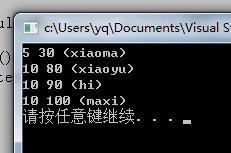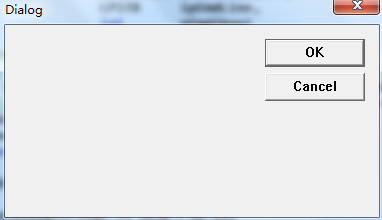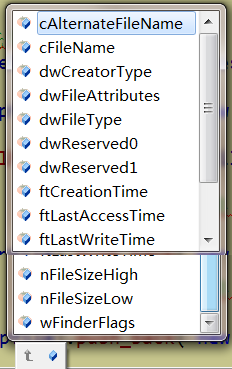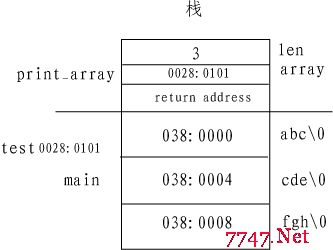最简单的TCP网络封包解包(补充)-序列化
如若描述或者代码当中有谬误之处,还望指正。
将数据能够在TCP中进行传输的两种方法
1.直接拷贝struct就可以了;
2.序列化。拷贝Struct存在的问题
1.不能应付可变长类型的数据,比如STL中的那些容器,当然,STL的容器归根到底就是一个class,他们的长度都是不确定的;
2.内存对齐的问题,Windows默认的对齐是4字节,如果不去刻意关闭掉对齐的话,那么可能会多出不少没必要的字节数,但是如果关闭了,内存拷贝又会慢一些。序列化是怎么序列化的?
其实很简单,我们使用一个uint8类型的数组,假设我们这里有一个uint16类型的数据,那么我们就把它拷贝进去uint8的数组里面,那么它就占了两个元素。这是最基本的规则。具体请参考代码里面的ByteBuffer::append()方法。而那些class神马的,我们只要按照自己设定的规则顺序拷贝进去就可以了。这个在BytBuffer里面默认支持了常用的STL容器,可以参看代码。类型定义
#if defined(_MSC_VER)
//
// Windows/Visual C++
//
typedef signed __int8 int8;
typedef unsigned __int8 uint8;
typedef signed __int16 int16;
typedef unsigned __int16 uint16;
typedef signed __int32 int32;
typedef unsigned __int32 uint32;
typedef signed __int64 int64;
typedef unsigned __int64 uint64;
#endif有的类型的长度会因硬件或者操作系统而异,如果直接使用c++关键字中的类型定义可能会出现问题。因此,需要自己定义以上这样的类型。利用宏去适配各个操作系统或者硬件平台。ByteBuffer的代码
/**///////////////////////////////////////////////////////////////////////////
/// 字节流缓冲类,可以进行序列化和解序列化操作,并且可以缓冲字节流数据。
//////////////////////////////////////////////////////////////////////////
class ByteBuffer
{
public:
const static size_t DEFAULT_SIZE = 0x1000;ByteBuffer()
: mReadPos(0)
, mWritePos(0)
{
mStorage.reserve(DEFAULT_SIZE);
}ByteBuffer(size_t res)
: mReadPos(0)
, mWritePos(0)
{
mStorage.reserve(res);
}ByteBuffer(const ByteBuffer &buf)
: mReadPos(buf.mReadPos)
, mWritePos(buf.mWritePos)
, mStorage(buf.mStorage)
{}/**///////////////////////////////////////////////////////////////////////////
public:
void clear()
{
mStorage.clear();
mReadPos = mWritePos = 0;
}template <typename T>
void append(T value)
{
append((uint8*)&value, sizeof(value));
}template <typename T>
void put(size_t pos, T value)
{
put(pos, (uint8*)&value, sizeof(value));
}/**///////////////////////////////////////////////////////////////////////////
public:
ByteBuffer& operator<<(bool value)
{
append<char>((char)value);
return *this;
}
ByteBuffer& operator<<(uint8 value)
{
append<uint8>(value);
return *this;
}
ByteBuffer& operator<<(uint16 value)
{
append<uint16>(value);
return *this;
}
ByteBuffer& operator<<(uint32 value)
{
append<uint32>(value);
return *this;
}
ByteBuffer& operator<<(uint64 value)
{
append<uint64>(value);
return *this;
}ByteBuffer& operator<<(int8 value)
{
append<int8>(value);
return *this;
}
ByteBuffer& operator<<(int16 value)
{
append<int16>(value);
return *this;
}
ByteBuffer& operator<<(int32 value)
{
append<int32>(value);
return *this;
}
ByteBuffer& operator<<(int64 value)
{
append<int64>(value);
return *this;
}ByteBuffer& operator<<(float value)
{
append<float>(value);
return *this;
}
ByteBuffer& operator<<(double value)
{
append<double>(value);
return *this;
}
ByteBuffer& operator<<(time_t value)
{
append<time_t>(value);
return *this;
}ByteBuffer& operator<<(const std::string& value)
{
append((uint8 const *)value.c_str(), value.length());
append((uint8)0);
return *this;
}
ByteBuffer& operator<<(const char* str)
{
append( (uint8 const *)str, str ? strlen(str) : 0);
append((uint8)0);
return *this;
}/**//////////////////////////////////////////////
补充:软件开发 , C语言 ,




